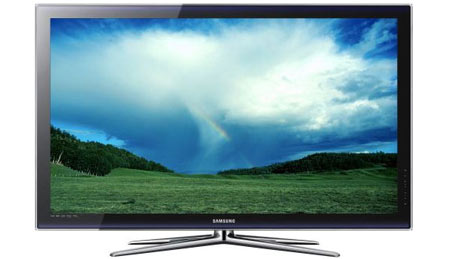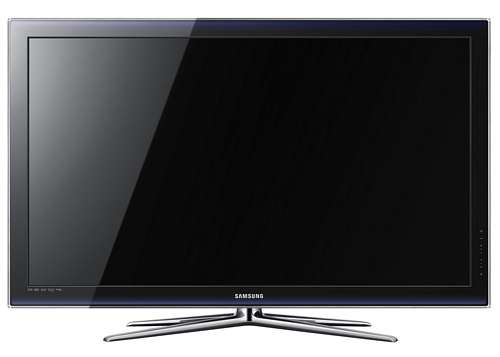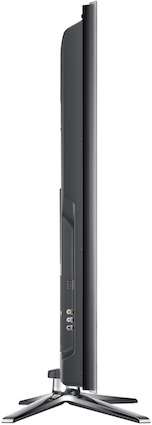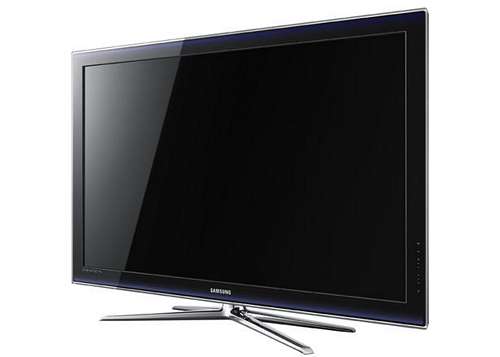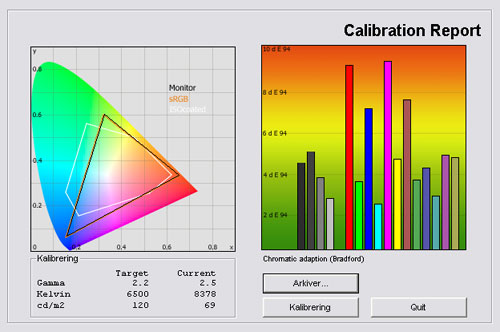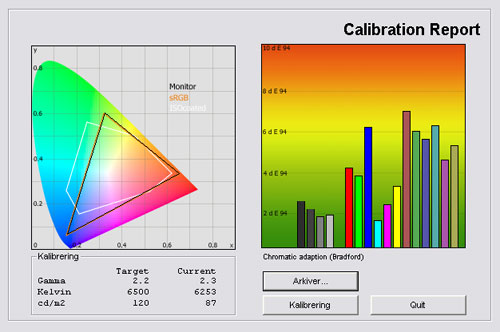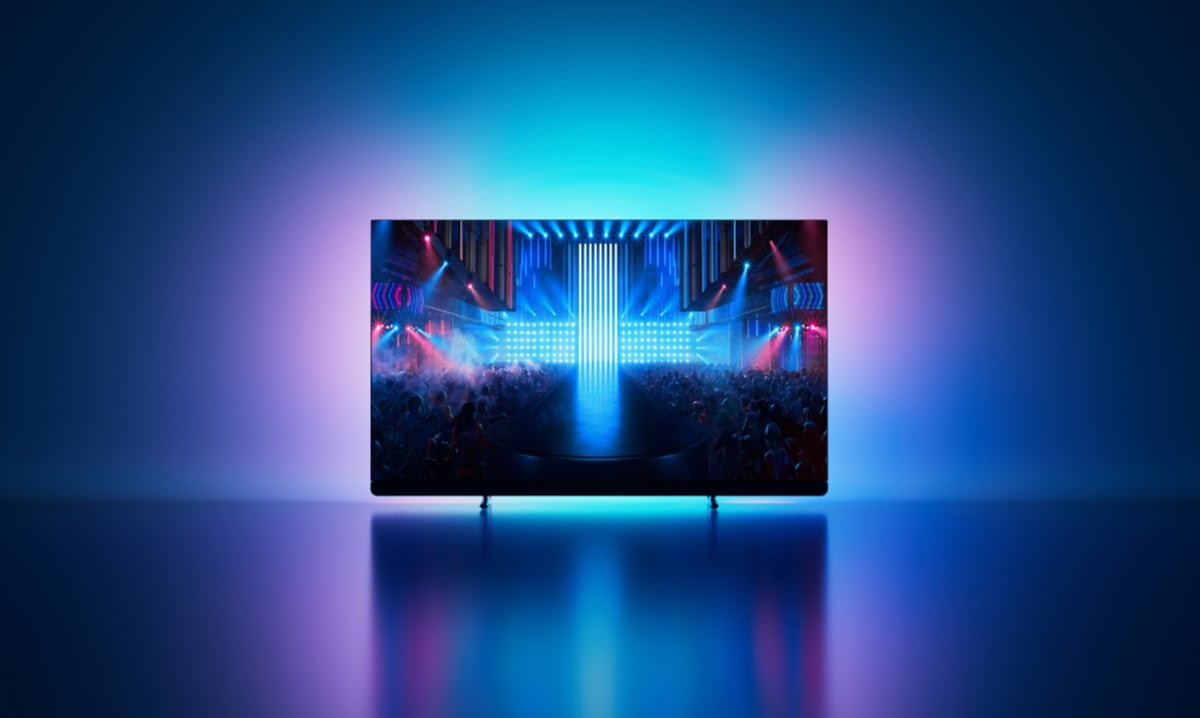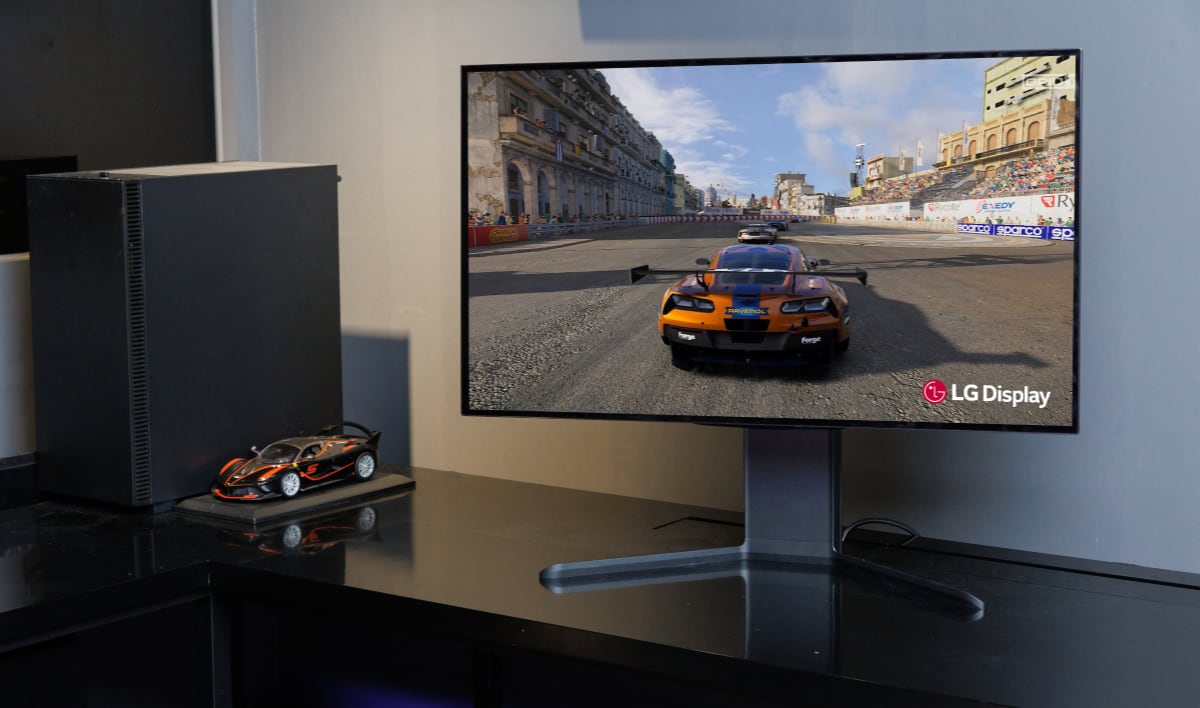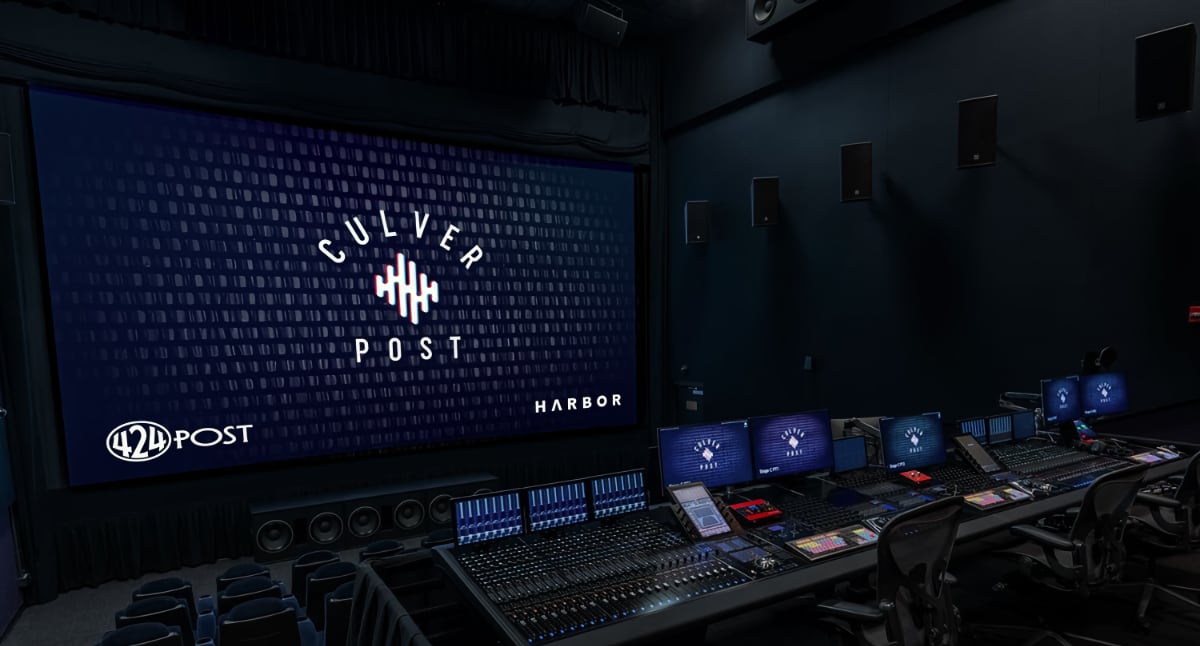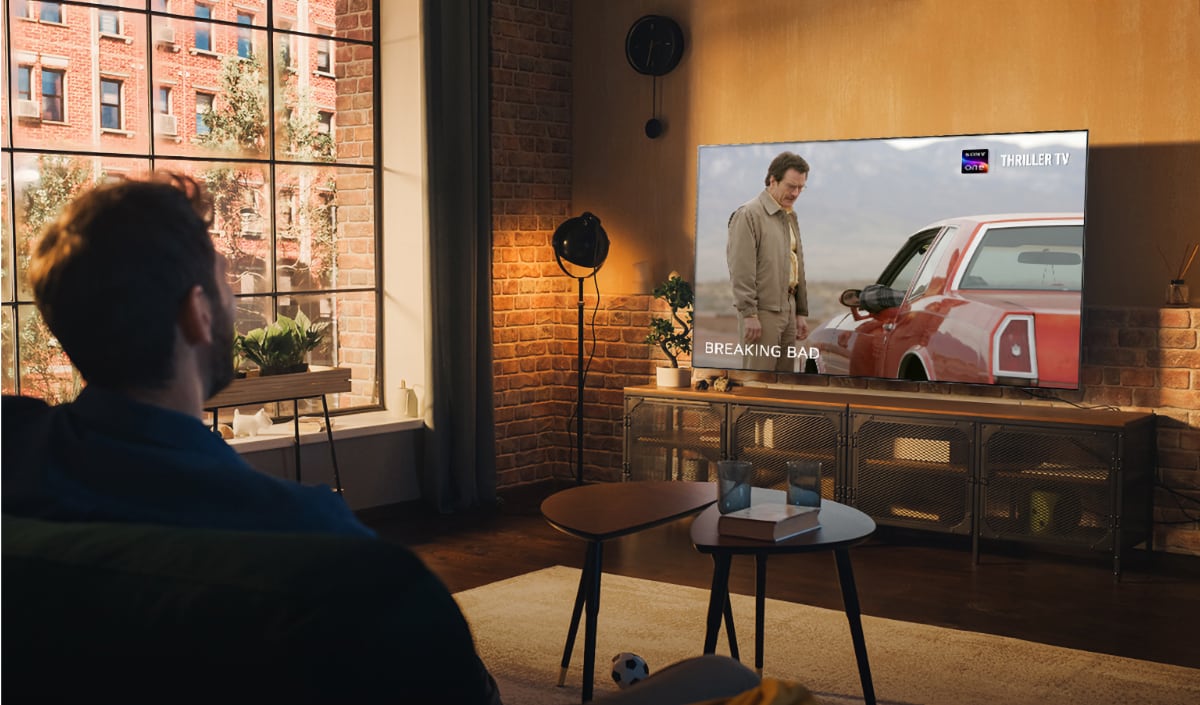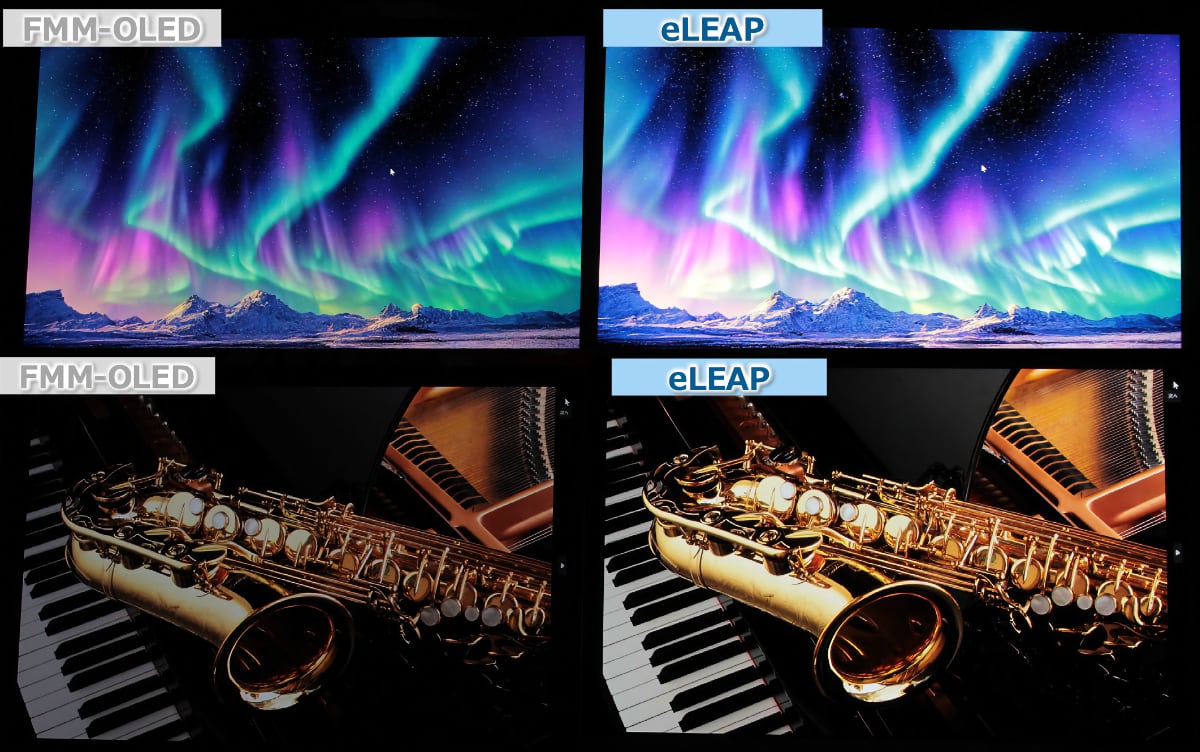Samsung C680
Samsung C680 review
Samsung has released a new, inexpensive 3D Full HD plasma TV called C680. The new model is considerably cheaper than any other 50-inch 3DTV out there and we’re eager to find out if C680 can match the 3D picture quality of its bigger brother.
So how good is 3D picture quality on the new Samsung C680 range? Is it worth spending the extra money on one of the high-end models such as the C7000/C8000 model? And how good is 2D picture quality? FlatpanelsHD intends to answer these questions in this Samsung C680 review.
Samsung C680 is available in 50 and 58 inches called PN50C680 and PN58C680 in the US, and in 50 inches called PS50C680 in the UK.
Subscribe to our Newsletter to receive e-mails when new reviews are online. We’ll soon publish our NEC EA232WMi, BenQ BL2400PT, Sony HX900 and Toshiba VX700/VL748 reviews as well.
Size: 50" widescreen Resolution: 1920x1080 Response time: - Contrast ratio: 2.000.000:1 (dynamic) Brightness: - Color support: 16,7 million colors Signal processing: 8 for each color Viewing angles (H/V): - Dot pitch: Panel type: Plasma Wall mounting: Swivel stand: Dimensions (HxWxD): 80.5cm x 121.4cm x 7.1cm (without stand) Weight 26 kg Built-in speakers: Input formats: 480p/i, 576p/i, 720p, 1080i & 1080p (50, 60 & 24p) Inputs VGA DVI (but possible to convert through HDMI)
Audio (type) (Audio in/out)
SCART (1 input)
S-video Composite Component HDMI (4 inputs, 1 HDMI 1.4)
Other Outputs Audio (type) (1 output, headphones)
SCART S/PDIF (optical)
Other Tuners Analogue DVB-T DVB-T (MPEG4) DVB-C DVB-C (MPEG4) DVB-S DVB-S (MPEG4) Other Price and retailer:
| US retailer | UK retailer |
 |  |
Our first impressions
Samsung C680 has the characteristic Samsung design with glossy plastic and the new four legged stand in aluminum look, that is actually made from a plastic coating with a metal bar inside.The stand has a manual swivel function that turns the large TV without problems.
Inputs are located on the back of the C680. Most point out towards the back wall which seems odd; simply because most of Samsung’s newer TVs have the inputs positioned downwards or to the side. The latter is far more convenient if you want to wall mount the TV.
Test tools
Our TV signal is DVB-S (satellite) from Canal Digital and DVB-T (terrestrial). We also have an analogue TV connection. Testing is done with the DVE (digital video essentials) and Peter Finzel test DVD. Testing is also done with DVD, TV, Blu-Ray and Media center/PC.We use our own monitorTest. The software supports some of the traditional test patterns used to evaluate displays as well as some new and unique test patterns developed by the people here on FlatpanelsHD.
Sony PlayStation 3 is our Blu-Ray player.
All contrast measurements are based on the ANSI methodology.
Functionality
The remote control feels cheap. It’s made from plastic and weighs very little. The buttons can be lit be pressing the button in the upper right corner.Samsung C680 is not packed with media functionality like its bigger brothers. It only features the AllShare (DLNA), USB and Wi-Fi via a USB dongle.
The DLNA functionality is good and supports most formats. For further information about the DLNA functionality in Samsung’s flat panel TVs, see one of our previous reviews such as the Samsung C8000 review.
If you want wireless DLNA streaming you can buy a Wi-Fi dongle for Samsung C680 and insert it into one of the USB slots.
Calibration settings
In the menus Samsung C680 has the following picture presets: Standard, Movie and Dynamic.
In the menus the following picture settings options are available: Cell Light, Contrast, Brightness, Sharpness, Color, Tint, Eco Settings (Eco Sensor), Digital Noise Filter, Mpeg noise filter, HDMI Black Level, and color tone (color temperature).
In the advanced menus you can adjust: Black tone, Dynamic contrast, Gamma, Color space, White Balance (RGB), Flesh tone and Edge Enhancement.
Energy consumption
Below I have measured energy consumption on the 50-inch Samsung C680. |  | |
| Stand-by | 0.1 W | 0.1 W |
| SD+HD | 151 W | 188 W |
| 3D | 219 W | 219 W |
After calibration I measured energy consumption to 188 W. Actually Samsung C680 has a marginally higher consumption level after calibration. The default picture preset has various Eco settings enabled by default and the TV also comes with a lower backlight setting in the menu than we aimed for.
I have also included a measurement of the 3D energy consumption. In the 3D mode the backlight is often maxed out to compensate for the reduction in light from the 3D glasses. Therefore the 3D mode also typically consumes more energy. In the 3D mode Samsung C680 consumes 219 W because the backlight is maxed out.
Calibration on Samsung C680
Below you can see an out-of-box measurement on Samsung C680 in the Standard picture preset called Standard.The graph says this:
The number on the left is the delta value. Delta is a difference between two factors; here it’s the difference between the measured color on the panel and the actual color that is our target.
The out-of-box result is above average and better than most of Samsung’s LCD/LED models.
We did experience some color deviations because gamma was not stable. We aim for a 2.2 gamma but gamma in the Standard picture preset was rising from 2.1 in bright shades to 2.8 in dark shades. This means that the bright colors are marginally too bright and the dark colors are too dark (shadow detailing is crushed, too).
Color temperature was too high at 8378 Kelvin compared to our target value of 6500 Kelvin. This gives us a slightly too cold and bluish picture but it’s also very common on flat panel TVs today.
I changed to the Movie preset and took a new measurement. The Movie picture preset is slightly better but not much. Gamma still rises from around 2.2 to 2.8. Color temperature is now very close to our 6500 Kelvin target which is positive but I wanted to improve picture accuracy further so I did a calibration on Samsung C680. See my result below.
It was not possible to get a perfect gamma curve, simply because Samsung C680 did not have the required setting options. I ended up with a mediocre calibrated result that is better than the standard settings but not as good as the more expensive C8000 model.
Below are my calibrated settings.
 | |
| Picture preset: | Movie |
| Cell light | 16 |
| Contrast | 81 |
| Brightness: | 50 |
| Sharpness: | 5 |
| Tint: | G50/G50 |
| Eco | Off |
| Black Tone | Off |
| Dynamic Contrast | Off |
| Gamma | +1 |
| Color Space | Auto |
| Flesh Tone | 0 |
| xvYCC | Off |
| Color Tone | Warm2 |
| Size | Screen Fit |
| Digital Noise Filter | Off |
| Mpeg noise filter | Off |
| HDMI Black level | Low |
| Edge enhancement | Off |
| R-Offset | 27 |
| G-Offset | 24 |
| B-Offset | 25 |
| R-Gain | 30 |
| G-Gain | 21 |
| B-Gain | 26 |
I increased the Cell Light setting to boost the brightness level on the plasma panel. I have also lowered the settings called gamma and contrast in order to improve gamma accuracy. Lastly I have changed the RGB (red, green, blue) values and deactivated most dynamic circuits.
Picture quality on Samsung C680
In this section I go through picture quality with the calibrated settings.Samsung C680 has a glossy plasma panel and you will see some reflections from windows and other light sources. C680 definitely performs better in this regard compared to previous Samsung plasma TVs but some of the more expensive plasma models have better anti-reflective coatings.
The panel also gets a bit washed out in bright environments so I advise you to increase the setting option called “Cell Light” if you’re primarily using the TV in a bright living room during the day.
The SD picture quality is generally good and better than on most Samsung LCD/LED models. The Samsung plasma TV tends to have softer, although less digital and more natural SD picture quality compared to the LCD/LED models.
I don’t see C680 competing with the more expensive plasma TV in SD picture quality but SD looks fairly good.
The HD picture quality is fair but detailing is not perfect. The picture processor is not capable of reproducing all color details (therefore we also saw some banding) and this means that the HD pictures are softer than on the high-end models. Naturally, HD still looks great because of the much higher resolution compared to SD.
I felt that blacks were too greyish on C680, however. I will examine black depth later.
Response time is generally good and most details are maintained in fast movie scenes and in games. The motion resolution is not as good as on the Panasonic high-end plasma TVs but certainly higher than on Samsung’s mid-end LCD/LED models.
I went on to examine phosphor trailing that is also an important factor. Phosphor trailing has not been eliminated but I feel that C680 is very close or on par with C8000 here. The 3D plasma panels utilize a new phosphor layer and the same layer is used on C680 to reduce 3D crosstalk, and at the same time it reduces phosphor trailing visibly. I rarely noticed phosphor trailing in practice.
When we tested the high-end Samsung C7700/C8000 we noticed that the new 3D panel had more retention than previous Samsung plasma TVs, probably because of the new phosphor and higher light output. On Samsung C680 we saw the same thing.
This TV has retention and you will see it from time to time. I think that the retention issues on C680 are a slightly worse compared to the more expensive C8000 model.
If you are bothered with retention on plasma TVs in general, Samsung C680 is probably not the TV for you. On the other hand; if you have had minor retention issues on previous plasma TVs and didn’t see it as problematic, then you won’t be bothered with C680 either.
A few users in the forums have complained about pixel faults on C680. Therefore we examined our sample for pixel faults. We found no pixel faults on our test samples – not on red, green, white, black or blue background.
Below I have measured black level and contrast.
 |  | |
| Black level | 0.19 cd/m2 | 0.13 cd/m2 |
| Brightness | 69 cd/m2 | 87 cd/m2 |
| Contrast ratio | 363:1 | 669:1 |
Contrast ratio +/- 50
After calibration I measured a black level of 0.13 cd/m2 – not very impressive. Unfortunately we have seen that some of the new 3D plasma TVs have taken a step backwards in black depth and C680 is an example.
0.13 cd/m2 black is not very deep and black appears to be slightly greyish. Again – we saw the same thing on C8000 – black level is improved visibly if you switch to the Movie picture preset and I advise you to do that. Before calibration I measured a black level of 0.19 cd/m2 in the Standard preset.
Shadow detailing fair but not great and I was not able to distinguish the two grey shades closest to black, simply because we didn’t reach our 2.2 gamma curve goal. The too high gamma in the darker grey tones means that some details in dark movie scenes and games are crushed on C680.
Below I have examined the Samsung C680in a completely dark room to see if it has clouding, backlight bleeding or floating black issues.
I saw no issues on Samsung C680.
3D picture quality on Samsung C680
We used the PlayStation 3 and a 3D Blu-ray player to test 3D movies and 3D games.Below you can see the 3D glasses with batteries.
I won’t say too much about 3D in general and what you should expect but instead refer to our Panasonic VT25 / VT20 review for a general 3D introduction.
In this test I want to examine 3D depth, 3D picture quality, 3D crosstalk and finally include a small comparison to some of the other 3DTVs on the market.
Samsung C680 can output enough brightness on the panel to give a proper 3D experience but it’s definitely more suited for 3D playback in dark environments.
In the 3D mode the black level is reduced visibly but with the glasses on the difference is neutralized. With 3D pictures picture noise is visible – especially in the darker areas of the picture.
Crosstalk is the most important factor when watching 3D on any TV and our tests have shown that the plasma TVs in general perform better in terms of 3D picture quality compared to the 3D LCD/LED models. Therefore we were eager to test this lower priced Samsung 3D plasma TV and to see if it compared to the more expensive C7700/C8000.
Crosstalk on Samsung C680 is noticeable in some scenes but all in all I feel that Samsung C680 has many of the same characteristics that we praised on the bigger brother C7700/C8000. Crosstalk is there and a slightly worse than on C8000 but it’s definitely much better than any of Samsung’s 3D LCD/LED models.
This ensures 3D depth and a fairly good 3D experience in both 3D games and 3D movies. For a low price 50-inch 3DTV I think this I probably what we can expect and I think most users will be satisfied. I did see some distracting crosstalk in a few PS3 games, yes, but it’s certainly not critical.
Samsung C680 also has a 2D->3D conversion function that works the same way as on other Samsung 3DTVs. I have to say that I’m not convinced – at all. If you want to watch 3D, you simply need 3D content. This 2D-conversion is not worth anything and I fear that some users mistakenly activate the 2D-to-3D conversion and confuse it with real 3D. This is not even close.
PC and Media Center
The TV supports 1:1 pixel mapping. In order to achieve 1:1 pixel mapping you need to select the aspect ratio called “Screen Fit" in the OSD.Viewing angles
The viewing angles are wide as with most plasma TVs today. Colors remain intense and contrast is not really reduced from angles.The glass layers are also bonded which ´means that you see no reflections between the layers like with some pre-generation plasma TVs. This also results in fewer reflections.
Sound quality
The speakers are decent but lacks bass. Sound quality is without doubt better than in those very slim Samsung TVs that we have seen lately but not on par with the speakers in for example Philips 9705H.The speakers are hidden but the TV has a functional Clear voices function. The speakers lack bass, however and this makes the overall sound experience feel a bit too flat.
For music and movie watching I recommend separate speakers.
Conclusion
Samsung C680 has only a fraction of the media functionality found in the more expensive models. This means no internet, no USB recording (in Europe) and no Apps. On the other hand C680 features Samsung’s DLNA function which is widely considered to be the best – but not complete - in any flat panel TV today. I just wished Samsung would have gone with the downwards facing inputs instead of the ones found on C680 that makes it hard to wall mount the TV.Samsung C680 has decent picture quality with acceptable color accuracy after calibration, quick response time, low phosphor trailing, and great SD picture quality compared to most LCD/LED models today. It lacks some detailing in HD pictures but the overall picture quality is above average. The 3D picture quality is also fairly good and definitely better than any of Samsung’s 3D LCD/LED models. But C680 is not competing with the Samsung C7000/C8000 plasma.
But Samsung C680 also has some issues and one is retention. The new phosphor in Samsung’s 3D plasma TVs seem to affect the amount of retention and we saw it in both games and casual TV watching. It’s not critical for most viewers but if you consider retention a general problem you might want to look elsewhere. The black level is not great either. We measured 0.13 cd/m2 which is higher (meaning more greyish blacks) than both previous Samsung plasma TVs and most current Samsung LED models.
All in all Samsung C680 is a decent mid-end TV with good but not great picture quality. The 3D picture quality is also better than any LCD/LED model today but the retention and black level issues might concern some of the more discerning users. However, for most average users I think Samsung C680 is a great choice.
Price and retailer:
| US retailer | UK retailer |
 |  |
 |  |  |
| Value-for-money | Inaccurate colors | Living room |
| Low 3D crosstalk | Black level | Home Cinema |
| SD picture quality | Retention | |
| Response time and motion resolution | No media functionality | |
| Low phosphor trailing | Out-of-box settings | |
| Reflections |

